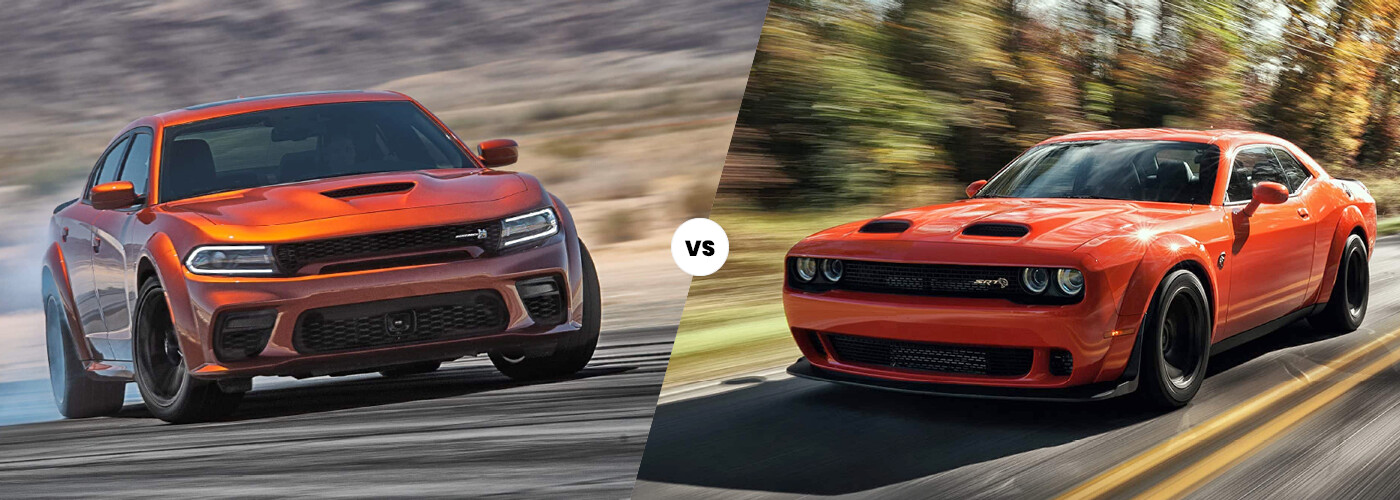Hello!
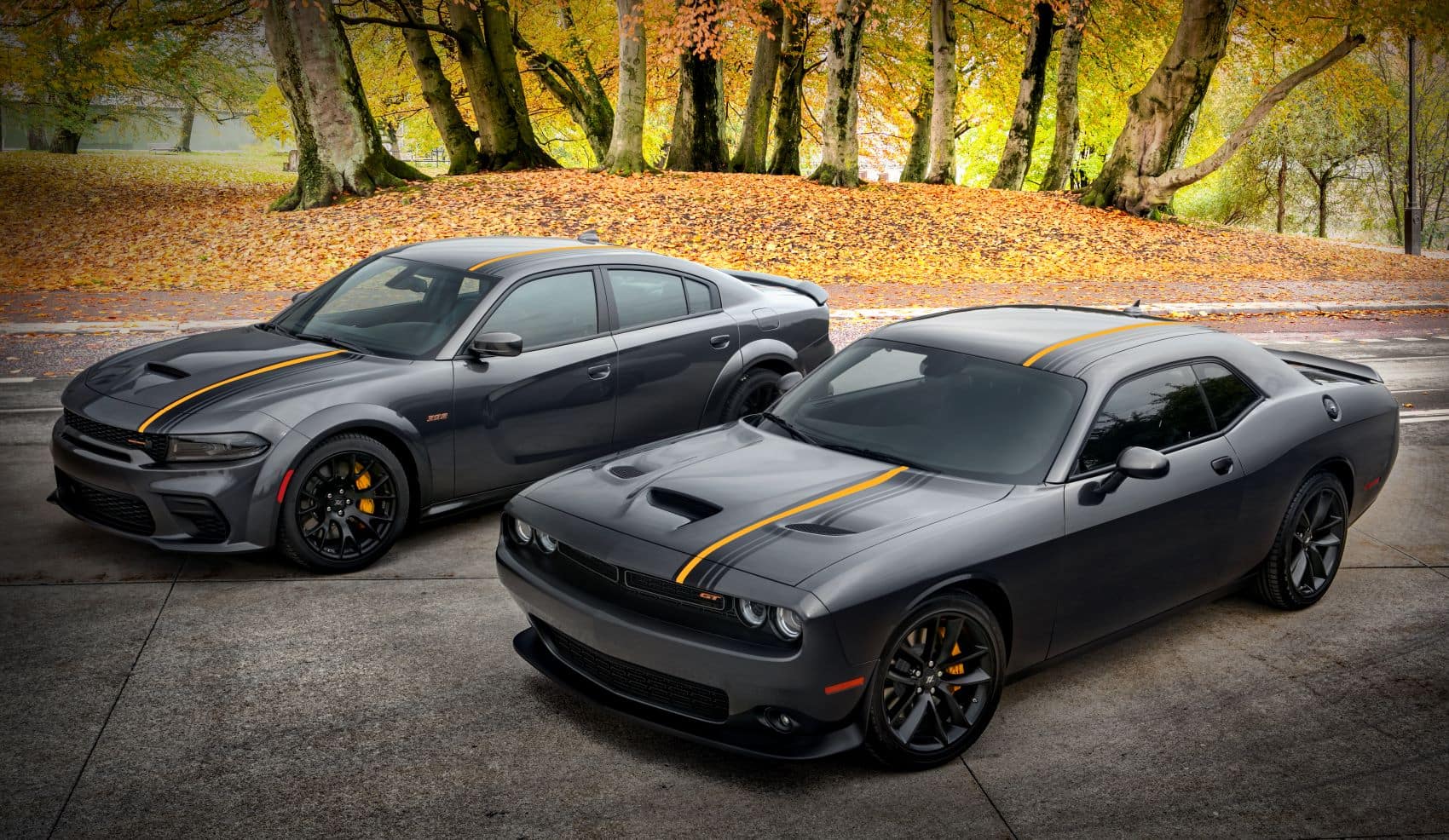 Both the Dodge Charger and Challenger are popular affordable muscle cars and built on the same platform. Still, there are differences between the two rides that make them more cousins than siblings. This raises the question; which is the better choice between the Challenger and Charger?
Both the Dodge Charger and Challenger are popular affordable muscle cars and built on the same platform. Still, there are differences between the two rides that make them more cousins than siblings. This raises the question; which is the better choice between the Challenger and Charger?
What are the Similarities?
They’re both bad boys that proffer brawn and pulse-racing punch, particularly in upper trim levels.
If you’re hungry for a throwback high-performance experience, with contemporary features and conveniences, both the Challenger and Charger fit the bill. The good news is Dodge deals are usually available on either car.
Since 2015, both models have offered ever-evolving freshened styling, more engine oomph, spiffier interiors, and new features.
What about Exterior Looks?
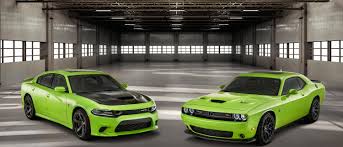 The main difference is the Challenger is a coupe with a usable back seat, and the Charger’s a sedan. Although the cars share architecture inherited from Mercedes-Benz and offer Old School muscle-car looks, the Challenger has more right angles and clean lines.
The main difference is the Challenger is a coupe with a usable back seat, and the Charger’s a sedan. Although the cars share architecture inherited from Mercedes-Benz and offer Old School muscle-car looks, the Challenger has more right angles and clean lines.
By comparison, the Charger is rounder and somewhat curvier. Because the Charger’s a four-door, its habitable portion is taller than of the Challenger. It’s also about three inches longer and offers relatively better outward visibility.
For its part, this version of the Challenger, which reflects three generations of evolution, has those retro, round headlamps and a long hood. With both models, you get to choose from a variety of hood and wheel styles that gain more trade with each upward trim.
How do they size up inside?
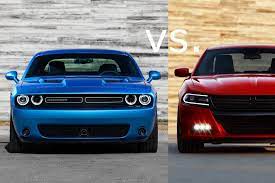 They’re pretty comparable interior-wise, and share the same buttons, dashes, and center consoles. Because of similar trim levels, both rides can be outfitted with upper-end fabrics and other appointments. Simply put, both vehicles are equally comfy. The Charger does offer backseat passengers more leg and foot room, and a somewhat bigger trunk. However, the Challenger’s trunk can also swallow large items.
They’re pretty comparable interior-wise, and share the same buttons, dashes, and center consoles. Because of similar trim levels, both rides can be outfitted with upper-end fabrics and other appointments. Simply put, both vehicles are equally comfy. The Charger does offer backseat passengers more leg and foot room, and a somewhat bigger trunk. However, the Challenger’s trunk can also swallow large items.
What about Challenger and Charger features?
When it comes to trim levels, bespoke choices, colors, and available equipment, both models allow you to, well, do you.
One can, for example, go from plain Jane cloth upholstery to heated and ventilated leather seats. You can also move up to a cabin that has a better fit and finish, and to higher performing suspension, tires, and brakes.
What Engines are Available?
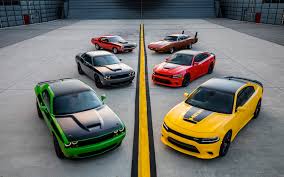 A base Challenger gets you a 3.6-liter V6 Dodge engine, which makes 305 horses and 268 pound-feet of torque.. With trim upgrades, you can get a 5.7-liter V8, with 370 horsepower and 395 pound-feet of torque — with the automatic transmission — or 375 horsepower and 410 pound-feet of torque with the manual. There’s also a 6.4-liter V8 available that puts out 485 hp and 475 pound-feet of torque.
A base Challenger gets you a 3.6-liter V6 Dodge engine, which makes 305 horses and 268 pound-feet of torque.. With trim upgrades, you can get a 5.7-liter V8, with 370 horsepower and 395 pound-feet of torque — with the automatic transmission — or 375 horsepower and 410 pound-feet of torque with the manual. There’s also a 6.4-liter V8 available that puts out 485 hp and 475 pound-feet of torque.
Meanwhile, with the Charger, you can get a base 3.6-liter V6 (305 horsepower and 268 pound-feet of torque), a 5.7-liter V8 (370 hp and 395 pound-feet of torque), or a 6.4-liter V8 (485 hp and 475 pound-feet of torque).
If you need next-level power, both the Challenger and Charger have Hellcat versions that feature a juicy 6.2-liter V8 that turns out 707 ponies and 650 pound-feet of pin back-torque.
Also read:
- Future of Rise of The Robots Cars
- How to Declutter Your Home?
- 3 Advantages of Load Testing Your Application
How do they Drive?
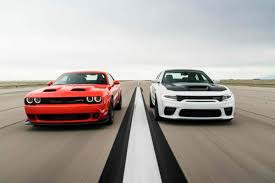 While the Challenger has slightly better acceleration and handling, the Charger provides a somewhat smoother ride. In the main, though, the two perform similarly. And, while neither vehicle is exactly a paragon of agility, they do boast straight-line brutishness, as well as highway comfort and quiet.
While the Challenger has slightly better acceleration and handling, the Charger provides a somewhat smoother ride. In the main, though, the two perform similarly. And, while neither vehicle is exactly a paragon of agility, they do boast straight-line brutishness, as well as highway comfort and quiet.
Bottom Line
So, between the Challenger and Charger, which is the better choice?
Ultimately, it comes down to lifestyle. Because it has four doors, a roomy cabin and large trunk, the Charger is more family-friendly for daily use and road trips. The big, brash Challenger might be better suited for thrill-seeking enthusiasts, who love to flash their overt sense of style.
In either case, it’s hard to go wrong.
Thank you!
Join us on social media!
See you!

